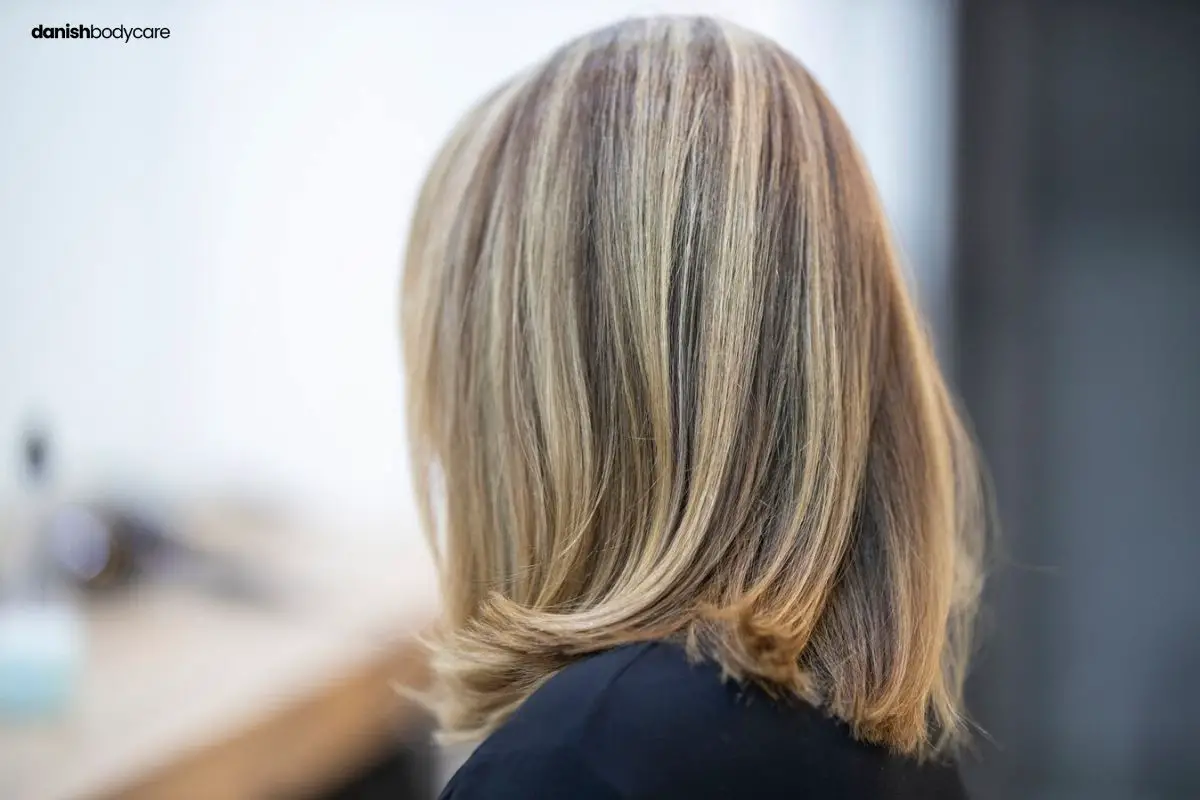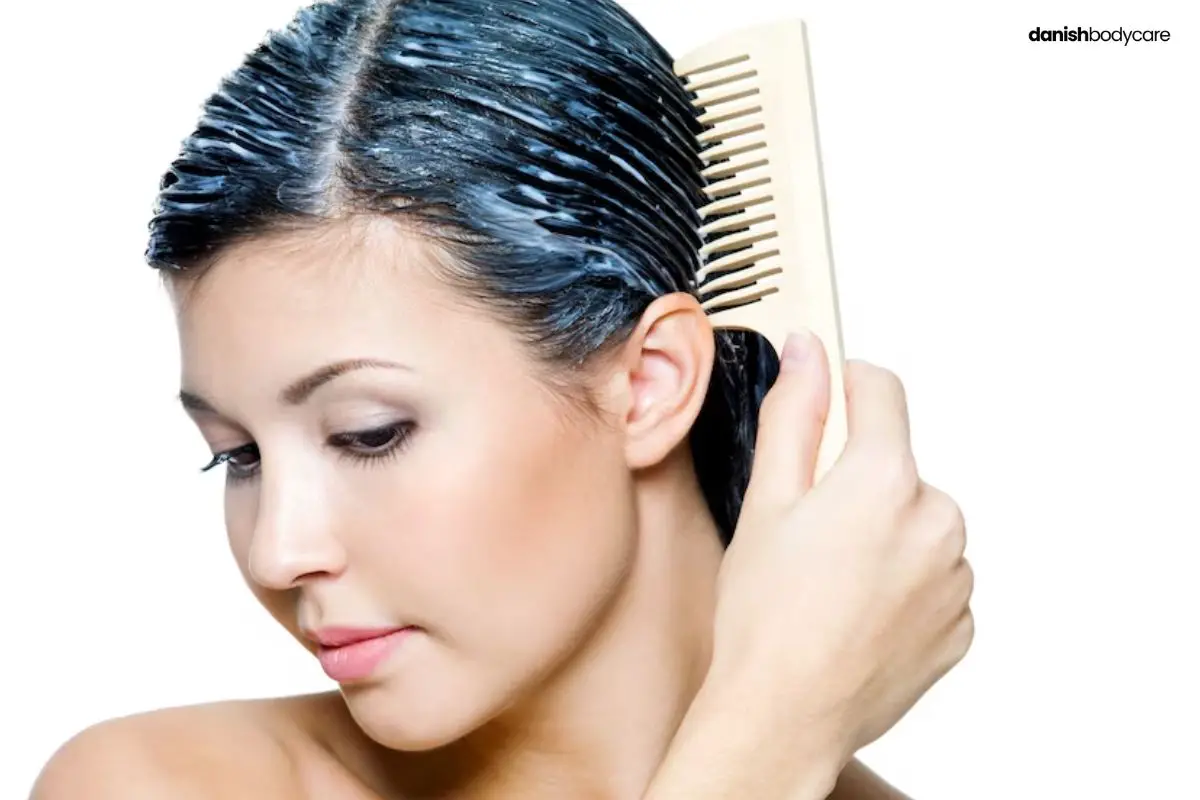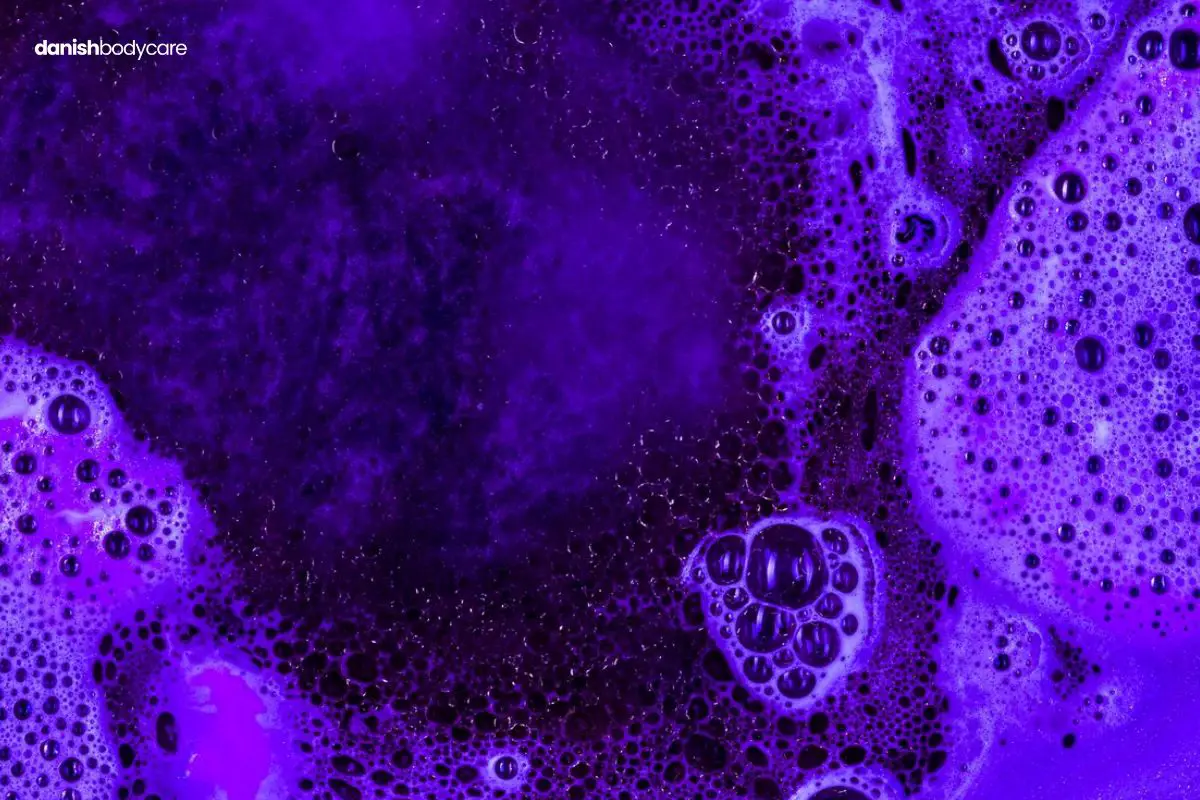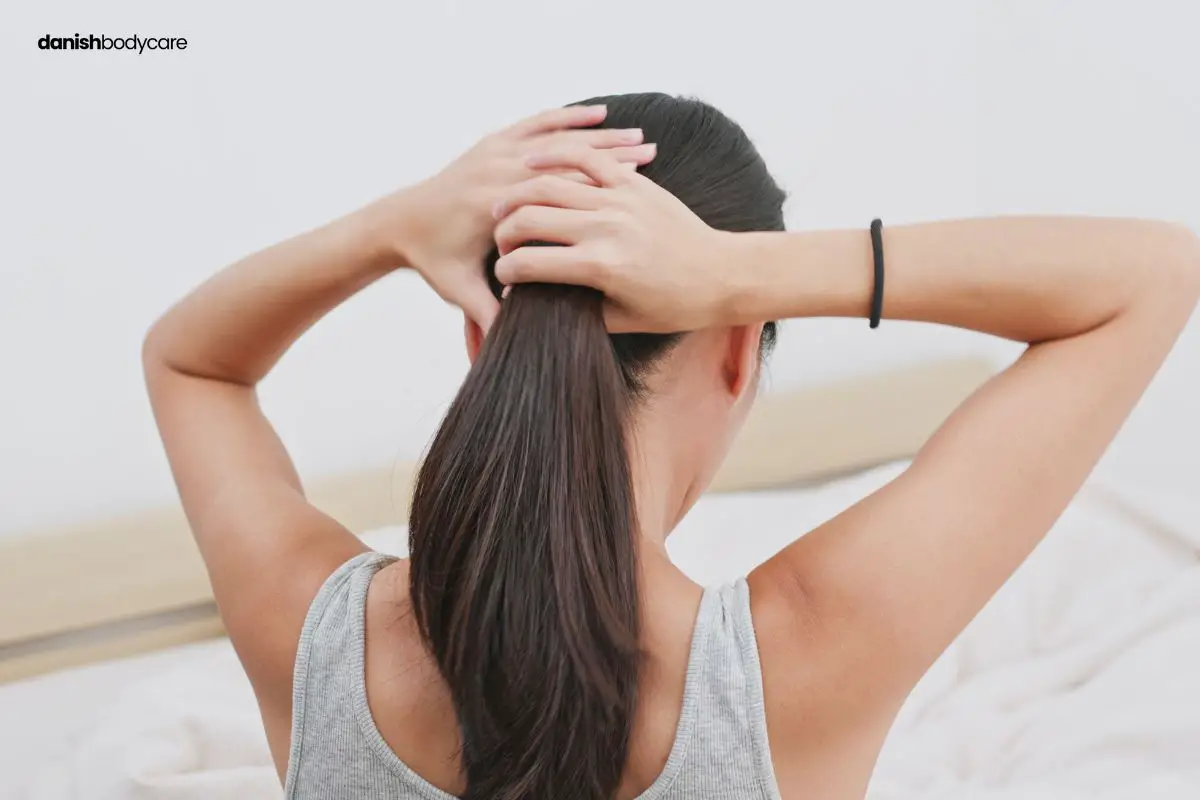Uneven hair color after bleaching is a common issue many people face. You decide to bleach your hair for a fresh look. But instead, you end up with a patchy mess.
This can be both frustrating and disappointing. One reason this happens is the varying porosity levels across your hair strands. Some parts absorb the bleach faster than others.
In this article, we will explore the causes and solutions for uneven color after bleaching. We’ll guide you on how to fix it and prevent it in the future.
Uneven Hair Color After Bleaching: The Basics

When you bleach your hair, you aim to achieve a lighter, even hair color. Sometimes, bleaching can result in uneven hair color with patchiness or dark spots. To fix this, you first need to assess the situation to figure out the severity of the unevenness.
Bleaching can cause damage to your hair. This makes it more important to find a solution that doesn’t cause further harm. One option is to blend the uneven areas with a darker hue.
Dyeing your hair with a darker shade can help neutralize the unevenness caused by bleaching. Concentrate on the areas where the bleaching results are uneven.
Remember, choosing the right bleaching product is essential for avoiding uneven hair color.
Bleaching products have different volume strengths, ranging from 10 to 40. Make sure you select the correct product based on your hair’s darkness.
Why Is My Bleached Hair So Uneven?
Your bleached hair might appear uneven due to various factors. Let’s see what could be causing this:
- Hair type: Hair absorbs bleach differently. There is a difference between hair types, such as thick, curly, or fine hair. this leads to uneven results.
- Uneven application: If you don’t apply bleach the same way across your head, some areas might not get enough product. This causes uneven color.
- Hair texture: Coarse hair might resist bleach more than fine hair, resulting in spots that are less lightened.
- Uneven hair porosity: Your hair’s ability to absorb moisture varies. This affects how bleach works on different sections, leading to uneven color. Check out our hair porosity quiz!
- Even bleach: Mixing bleach evenly ensures consistent hair lightening. An uneven bleach mixture might lead to patchy results.
How to Apply Bleach Correctly

To avoid uneven hair color after bleaching, follow these steps:
- Combine bleach and developer according to the package instructions. Make sure to mix it well.
- Before applying the bleach, section your hair into smaller parts for easier control.
- Start at the back of your head and work your way forward. Use a brush to apply the bleach to each section, making sure to coat every strand.
- Conduct a strand test before applying bleach to your entire head. Apply a small amount of bleach mixture to a hidden section of hair and check the color after a few minutes.
- Adjust the bleach mixture or processing time as needed.
- If you are working with long hair, consider using foils to keep the sections separated and well-saturated with bleach.
Remember, your goal is to have an even application of bleach on your hair, so take your time and be thorough.
Specific Techniques for Roots and Highlights
When dealing with uneven hair color after bleaching, focus on the roots and highlights. Here are a few techniques to help you achieve a consistent look:
- Section your hair
- Apply the product to mid-shaft and ends first
- Use a reliable applicator
- Customize your bleaching techniques
Section Your Hair
Before applying any product, make sure to divide your hair into sections. This way, you can work on one area at a time. Use a mirror to see your progress, and don’t forget to take breaks if necessary.
Apply The Product To Mid-shaft And Ends First
When using bleach or any hair color, start by applying the product to the mid-shaft and ends of your hair.
This will prevent the roots from processing faster due to the heat emanating from your scalp and help achieve a more even color.
Use A Reliable Applicator
Choose an applicator that’s easy to work with, such as a brush or a sponge. A good applicator will help you apply the product evenly and avoid any unnecessary mess.
Customize Your Bleaching Technique
If your hair has natural variations in color, such as highlights or darker roots, tailor your bleaching process. If your roots are darker, you might need to apply the bleach longer on these areas to achieve a consistent color.
Remember, being patient and thorough is key when fixing uneven hair color after bleaching.
How Do You Fix Uneven Hair Color After Bleaching?
Fixing uneven hair color after bleaching may seem like a daunting task. With the right approach and products, you can get your hair looking great again.
Here are some steps to help you fix uneven, bleached hair:
- Assess the severity
- Neutralize with toner
- Re-bleaching or spot-bleaching
- Blend with a darker hue
- Transition with a lighter color
Assess The Severity
Take a good look at your hair to determine how uneven the color is. This will help you choose the most suitable solution for your situation.
Neutralize With Toner
Toner can help counteract unwanted shades in your hair. Choose a toner corresponding to the lighter color you hope to achieve, and follow the instructions to apply it evenly.
Re-bleaching Or Spot-bleaching
If certain areas are lighter or darker than the rest, you can try spot bleaching to even out the color.
Be careful to only apply bleach to the areas that need it, and avoid overlapping with previously bleached sections.
Blend With A Darker Hue
If your hair is unmanageable, you can dye your hair with a darker color to help camouflage the unevenness.
Focus on areas where the bleaching results are uneven, and don’t be afraid to ask for help if you’re unsure of how to apply the dye.
Transition With A Lighter Color
If you prefer to go lighter, you can gradually lighten the darker sections of your hair. Remember that this will need more frequent dye jobs and touch-ups. Prepare for the maintenance involved.
Best Products for Best Results
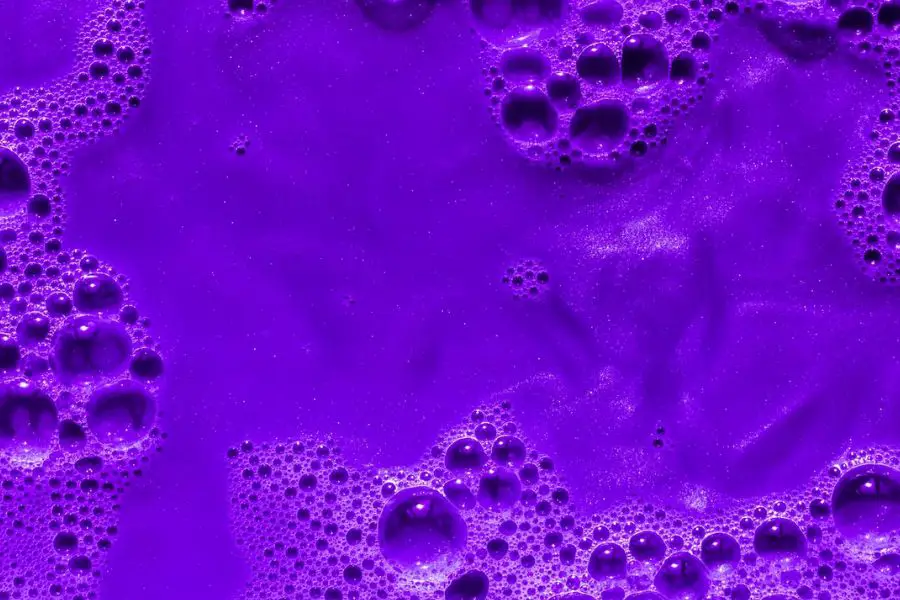
To achieve the best results after uneven hair color from bleaching, consider using a few specific hair products.
You can apply a toning shampoo or purple shampoo to neutralize unwanted yellow or brassy tones. Use this type of shampoo a couple of times a week, and always follow the recommended amount of time on the label.
After cleansing, use gentle conditioning products to help maintain your hair’s health. Opt for products designed for color-treated or damaged hair to support hydration and restoration.
In case the uneven color persists, you might need to resort to hair dye to blend the uneven areas with a darker hue.
Maintenance and Post-Bleaching Care
Taking care of your hair after a bleach job is crucial to keep it looking good and healthy. It’s important to be patient and commit to proper maintenance.
Here are some tips to care for your hair after bleaching:
- Use a deep conditioning treatment or hair mask once a week to hydrate and nourish your bleached hair.
- Incorporate hair care products designed for treated hair into your routine.
- Trimming ends on a regular basis can also help prevent split ends and keep your hair looking fresh.
- Reduce the use of heat-styling tools like blow dryers, curling irons, and straighteners to reduce further damage to your hair.
When to Consult a Professional Hairstylist
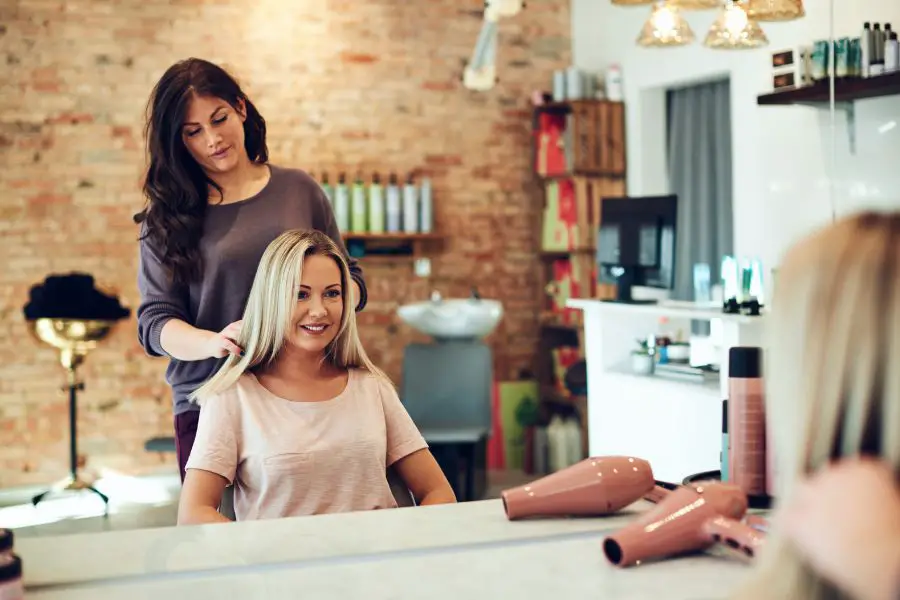
It’s a good idea to consult a hairstylist if your bleached hair has a patchy or inconsistent tone that’s too challenging to fix at home. They can offer treatments to help even out the color, like:
- Toners
- Color correctors
- Balayage
If your hair feels weak, damaged, or over-processed after bleaching, a professional can evaluate its condition. They can recommend treatments to repair and strengthen your hair. Sometimes, a trim might be necessary to remove damaged ends.
Frequently Asked Questions
How to correct patchy bleached hair?
To correct patchy bleached hair, consider using a semi-permanent dye to even out the tone. Apply the dye to the lighter areas, helping them blend in with the rest of your hair. Remember to follow the manufacturer’s instructions. Take care to avoid over-processing your hair.
Is it OK to change hair color after bleaching?
Yes, you can change your hair color after bleaching. Experts recommend waiting at least two weeks after bleaching to avoid potential damage. Always use a color-safe shampoo and conditioner to maintain the health of your colored hair.
Can I dye over unevenly bleached hair?
You can dye over unevenly bleached hair. Apply a semi-permanent dye to the lighter areas, ensuring they blend with the rest of your hair. Wait at least two weeks after bleaching to avoid further damage and to follow proper hair care practices to maintain your hair’s health.

